The way to make pictures appear like movie in Lightroom is query photographers who observe my web site ask me repeatedly.
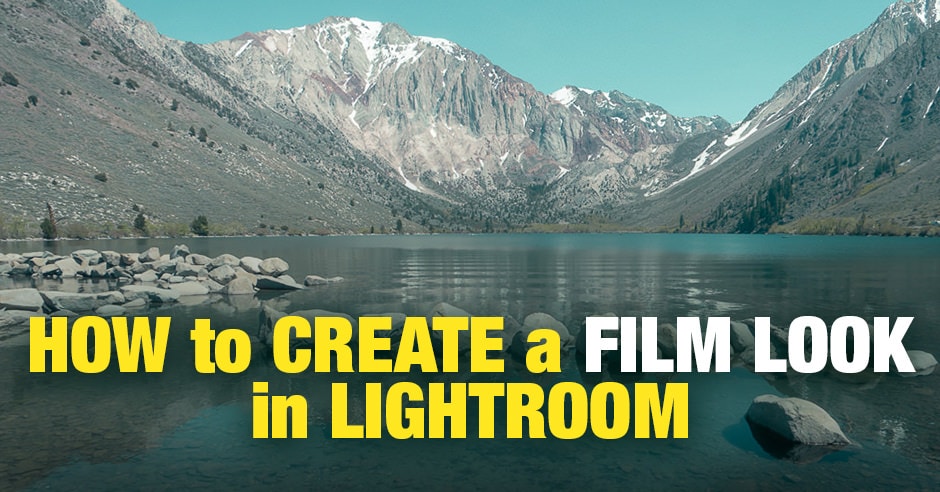
Although movie pictures has skilled a resurgence lately, it’s removed from turning into mainstream once more. However I imagine persons are ravenous for nostalgic analog aesthetics of movie pictures with all its imperfections.
I admit that digital pictures presents unparalleled benefits. Nonetheless, it usually produces an unrealistic reflection of actuality the place digital pictures look too excellent, generally too related, and haven’t any character.
In case you are not prepared but to embrace analog movie pictures, I give you a inventive compromise. Use your digital pictures however course of them in Lightroom with analog movie pictures in thoughts. Create a nostalgic previous really feel of darkroom processing.
As an alternative of creating a Lightroom movie preset and share with my readers, I made a decision to place collectively a step-by-step information so you may perceive and discover ways to make pictures appear like movie in Lightroom.
How To Edit Your Pictures Look Like Movie In Lightroom
To make a photograph appear like movie, begin with lowering distinction and readability within the Fundamental panel. Desaturate heat colours within the HSL panel and shift the colour steadiness utilizing Coloration Gading instruments. For the ultimate contact, add superb grain with the assistance of the Impact panel.
In movie pictures, the ultimate look of the picture is outlined by the chemical traits of the movie. Through the years, hundreds of several types of movie had been developed, with essentially the most notable Fuji Velvia, Kodak Ektar, Fujifilm Provia, Kodak Tri-X, Ektachrome, and Kodachrome.
However right this moment, we purpose to not create a specific movie’s look however relatively a generic feel and appear that displays analog pictures.
When creating new presets, I by no means restrict myself to what number of Lightroom changes I exploit and what number of totally different sliders I contain. I exploit as many I as I really feel mandatory to realize my desired look. In right this moment’s information, we’ll use the minimal variety of Lightroom changes to create the movie base, the one you may customise and take it so far as your creativity takes you.
Step 1: Cut back Distinction within the Fundamental Panel
One of many essential variations between digital and analog pictures is dynamic vary. The fashionable digital sensors produce pictures with a a lot wider dynamic vary than movie.
It’s most evident in panorama pictures when shooing movie. Due to the narrower dynamic vary, capturing a complete vary of sunshine from the scene is usually unimaginable. Because of this, when capturing movie, you usually see clipped shadows or highlights.
After I begin processing digital pictures in Lightroom, I attempt to maximize their dynamic vary. I do it by cranking up the Highlights and the Shadows sliders, and within the subsequent step, I set black in white factors utilizing the Whites and the Black sliders. It helps protect the broadest dynamic vary and attain most distinction with out clipping highlights and shadows. You could find a devoted tutorial right here: Setting Black and White Factors in Lightroom.


However we’re not attempting to maximise the dynamic vary and distinction to make pictures appear like movie.
We use the Highlights and the Shadows sliders to cut back the picture’s distinction with out touching distinction devoted controls.


Necessary. At this level is the best time to regulate publicity of your picture. Whether it is overexposed or underexposed, use the Publicity sider of the Fundamental panel to steadiness it. In my case, I didn’t must do something as a result of I nailed publicity once I took the picture.
Step 2: Cut back Readability Utilizing Dehaze
Immediately in digital pictures, there may be an obsession with picture sharpness. Digital sensors, together with trendy lenses, produce very sharp pictures. On high, you need to use devoted sharpening applications in post-processing. “Sharpness obsession” usually ends in pictures with an unnatural look.
Movie pictures has a distinct really feel. The mix of properties of analog movie with older lenses produced a lot softer prints, usually with a dreamy look.
Within the second step, we have to scale back Readability. We will do it within the Fundamental Panel.
There are totally different adjustment sliders you need to use to cut back readability. The obvious decisions are the Readability and Distinction sliders. Plus, you may obtain an identical impact utilizing the Texture slider.
However, I desire to make use of the Deheze slider. It produces a extra delicate impact.
Transfer the Deheze slider to the left (-33).


Step 3: Management Particular person Colours in HSL Panel
On this step, we’ll manipulate particular person pictures’ colours.
The objective is to desaturate the nice and cozy colours: Purple, Orange, and Yellow. And to shift the cooler colours: Blue, Aqua, and Inexperienced, towards a hotter spectrum.
We will obtain our objectives within the HSL Panel.
Use the Saturation tab to desaturate Yellow, Orange, and Purple by shifting the sliders to the left.
Use the Hue tab to shift the Blue, Aqua, and Inexperienced. Blue turns into turquoise, Aqua greenish, and Inexperienced yellowish.
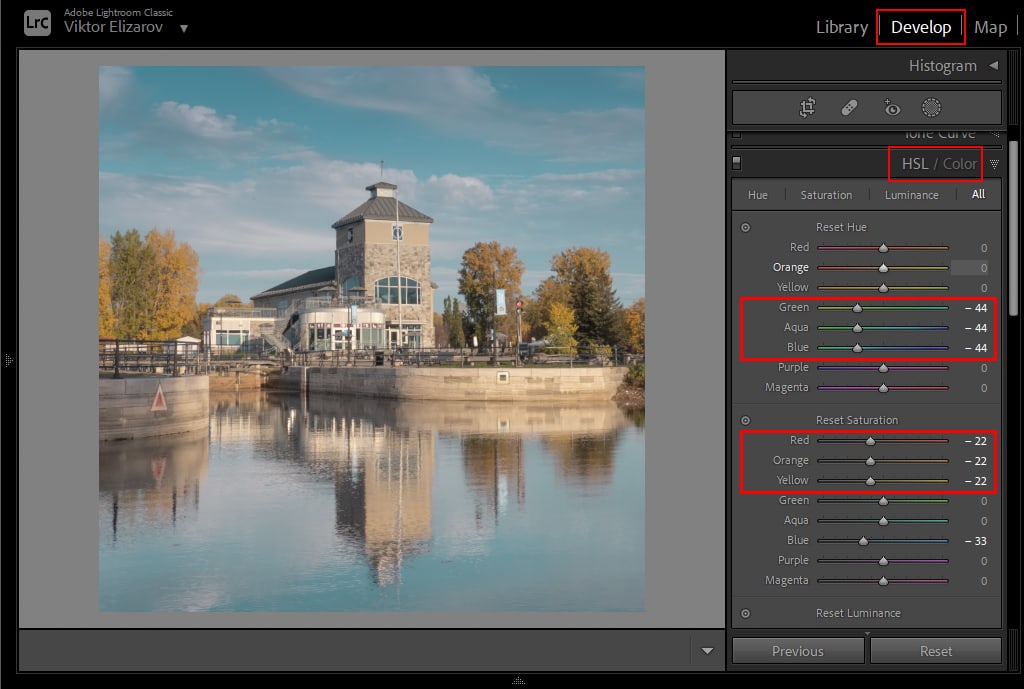

The Luminance sliders management the brightness of particular person colours. The changes listed below are image-dependent. If any of the colours in your picture is simply too shiny or too darkish, modify Luminance accordingly.
Step 4: Create Break up Firming Impact within the Colar Grading Panel
The cut up firming is the method of introducing totally different colours to the highlights, the midones, and the shadow areas of the picture. We will obtain it through the use of the Coloration Grading panel (formally often called the Break up Firming).
In our case, we’ll add blue shade to the shadows, which can make them cooler. And by including the orange shade to the highlights, we’ll make them hotter. And to make it less complicated, we’re going to disregard the Midtones.
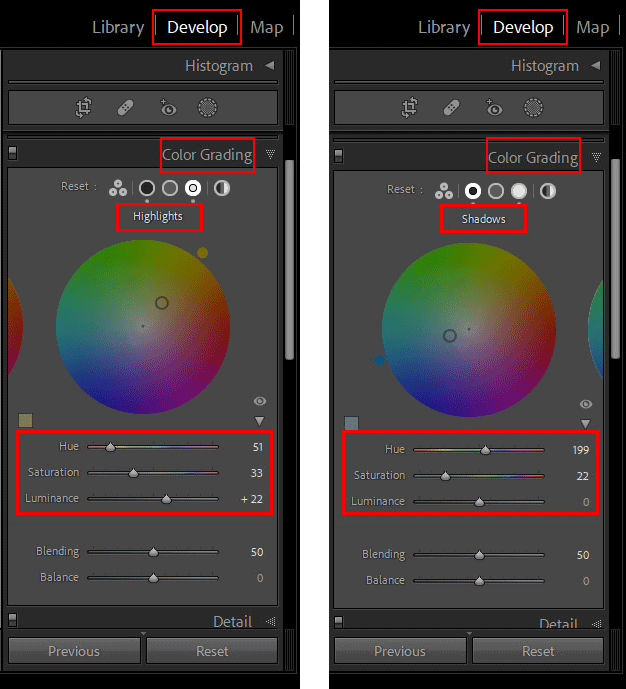

I used very conservative values. However be at liberty to experiment. Shifting the Saturation slider to the best will create a powerful impact.
Step 5: Add Grain Utilizing the Impact Panel
In digital pictures, we have now noise. It’s extra outstanding within the shadows.
We now have grain in analog pictures, which seems primarily within the highlights.
Grain is the fixed property of analog pictures.
The plastic emulsion of movie is coated with light-sensitive layers of silver halide crystals. Movie emulsion that has layers of crystals coarser and bigger is rated as extra delicate to mild. The bigger grains permit the emulsion to file mild extra shortly. Likewise, movie emulsion rated as having decrease sensitivity to mild has a finer movie grain.
The bigger dimension and coarseness of the movie’s silver halide crystals improve the sunshine sensitivity and ISO pace. It ends in footage with extra grains and lesser saturation.
It implies that larger ISO movies produce extra pronounced grain. You may management grain properties within the Results panel.
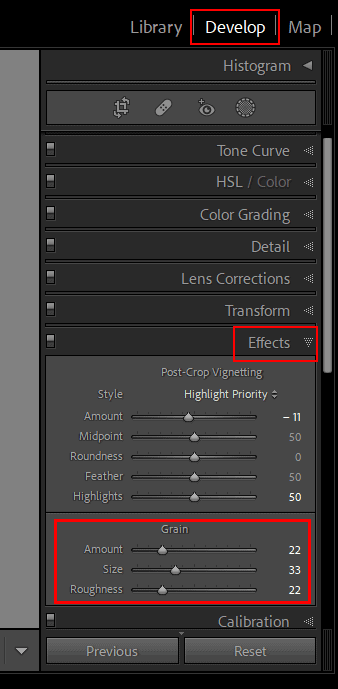

Be at liberty so as to add extra grain or make it bigger and extra pronounced.
And right here is the ultimate end result:
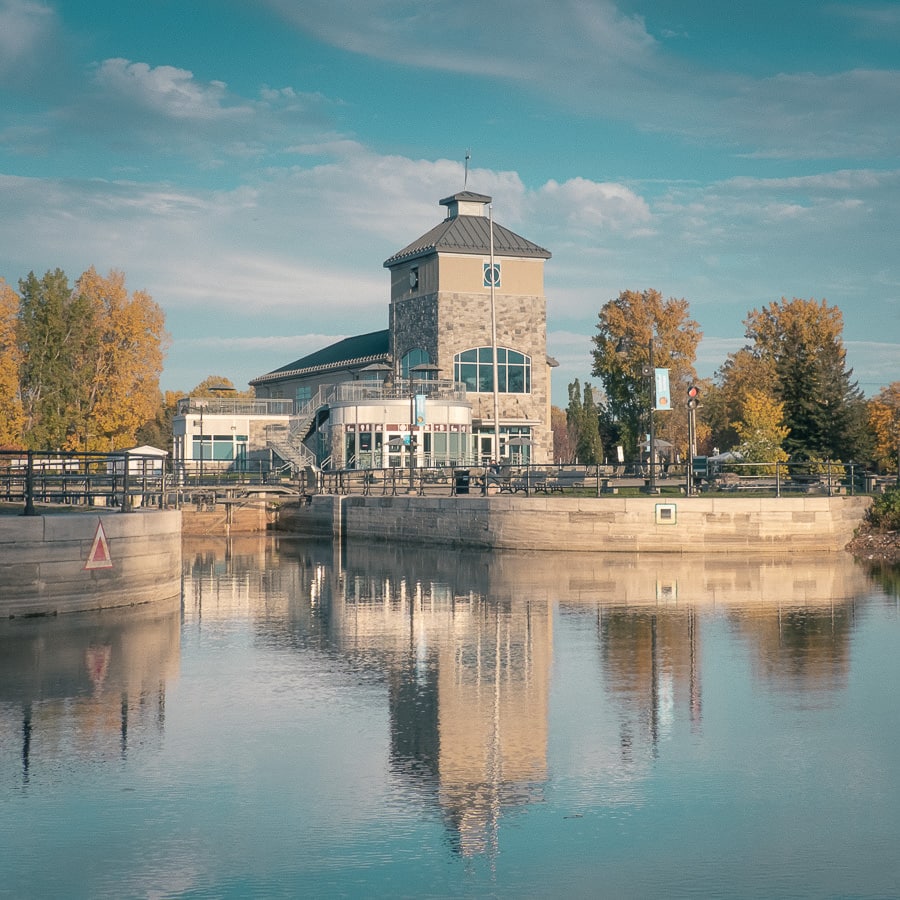

Step 6: Customization (Non-obligatory)
Since it’s nearly unimaginable to develop a common modifying methodology that works with each picture, you’ll most definitely must customise it.
Begin customization with the HSL panel.
For instance, suppose you edit a panorama picture with an unlimited open sky with predominant blue colours. In that case, you almost certainly might want to scale back the saturation of blues within the Saturation panel.
And if in case you have a picture with loads of vegetation, you will want to play with Inexperienced, Orange, and Yellow colours within the HUE panel.
Use the Coloration Grading panel by including varied colours to the shadows and the highlights. Additionally, play with the colour depth by adjusting the Saturation slider. It can let you create a vast variety of modifying variations.
Beneath are some examples of pictures I processed utilizing the “movie look” approach I outlined above:
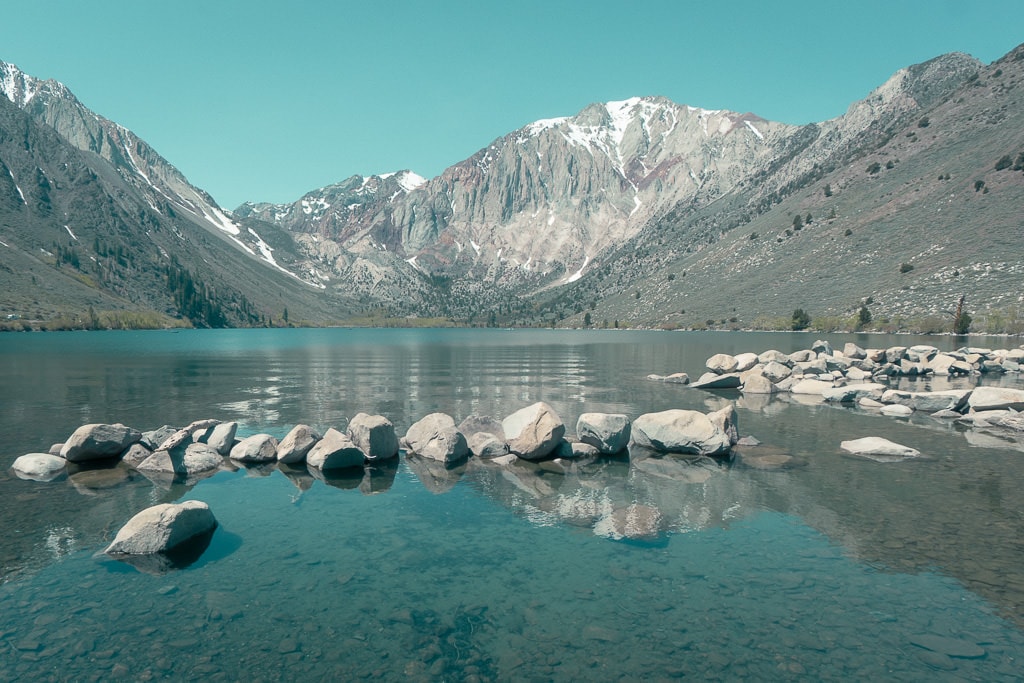





How To Make Pictures Look Like Movie In Lightroom Cell
Making pictures appear like movie in Lightroom Cell is much like the Lightroom Traditional. You should utilize the framework to make pictures appear like movie in Lightroom I coated above to edit pictures in Lightroom Cell.
The Lightroom Cell has similar modifying changes to Lightroom Traditional, however in some circumstances, they’re grouped in panels with totally different names.
For instance, there isn’t a Fundamental panel in Lightroom Cell; it’s referred to as the Mild panel as an alternative.
You could find the HSL changes beneath the Coloration Combine panel in Lightroom Cell.
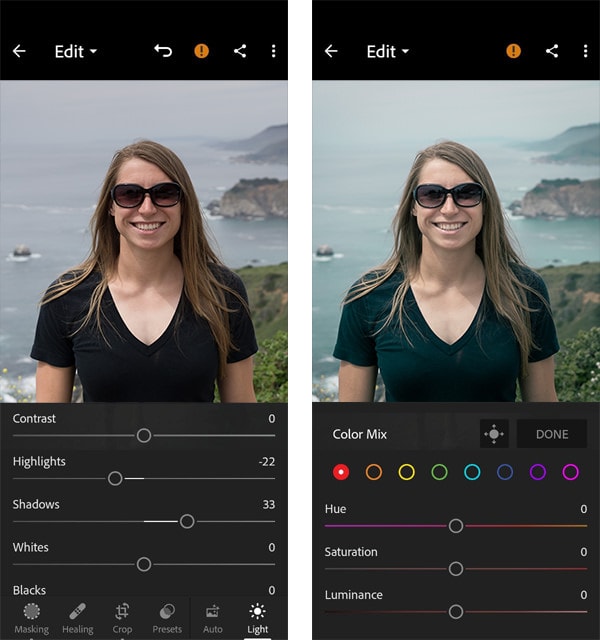

However the easied methodology to realize a movie look in Lightroom Cell is to create Movie Preset in Lightroom Traditional, set up it to Lightroom Cell, and reuse it when wanted.
How To Make Pictures Look Like Movie | Closing Ideas
The objective of this tutorial is to offer you a common methodology of “ make pictures appear like movie.” The modifying impact you may modify and take even additional by creating totally different variations of the “movie look.”

